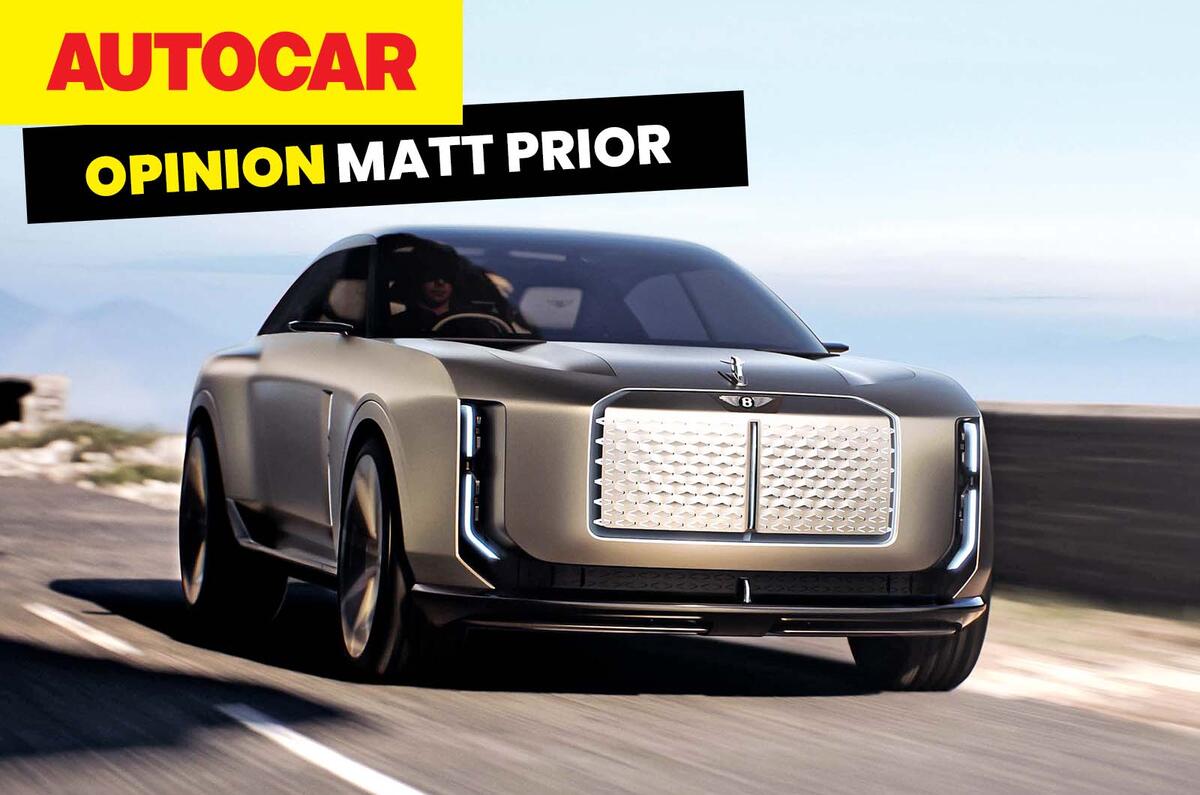Ever see something online and sigh and think that you know what the comments are going to be like? That’s how I felt when I saw the studio pictures of the Bentley EXP 15 concept car.
I feel like I could have told them. And while I know that what people say on social media is not a true representation of what the public thinks, especially those who can afford a Bentley, there is enough ‘Jaguar-lite’ and ‘yikes’ sentiment to see that this is a challenging car.
Bentley must have known that, mustn’t it? The EXP 15 is not set for production but that doesn’t mean it won’t inform the cars Bentley will make in future.
The company has form here: remember the EXP 9 F from the 2012 Geneva motor show? It was not exactly a looker, was not widely gracefully received, and while not destined for production in that form, it did preview the Bentayga, which arrived looking even worse.
‘Challenging’ seems to be a word of the moment. Even Julian Thomson, the General Motors designer who has created some truly beautiful cars, used it in our interview with him last month.
Designs, he thought, should challenge; although he works in an advanced design studio so he has more reason to believe that, and there’s nothing ungainly about his studio’s latest Corvette concept. But designers today do seem to like cars that are challenging. They like dissonance. Why?
Clearly it’s a choice. Car designers know what beautiful is because they’ve studied it, and they’re beautiful people with beautiful lives, houses, dogs and partners, and they can pull off wearing suits with trainers.
When it comes to dating apps and sessions on Rightmove, are they swiping yes on ugly people and houses because they’d like to be challenged? Because it doesn’t seem so.
So why the challenge when it comes to cars? Why should a car be difficult to look at? An argument goes that you think a car is beautiful straight away and then over time its appeal will fade. It’s too obviously pretty, or bland.
But I’m not sure I buy this. Wasn’t the Aston Martin DB9 immediately a stunner? To my eyes, it still is. Wasn’t the Porsche Cayenne a gomper at birth? And I’m afraid I’d still swipe left if its mug appeared on Tinder.
Besides, isn’t life challenging enough? Earlier today, I spent an hour typing one-handed on a train that had standing room only in its four (clearly too few) carriages. My motorbike insurance renewal was just offered to me with a 67% price hike, necessitating a drudge through comparison websites.
The new policy documents tell me it will automatically renew, which I didn’t ask for and was given no option to opt out of; remembering this will be another drain on my inadequate mental capacity. Four members of my family have been in hospital in the past three months.
The road surface is failing outside my house. My local council has launched another survey about planning, which I will fill out, even while knowing the council will ignore the views of the majority of residents.
The book Nudge: Improving Decisions About Health, Wealth, and Happiness introduces a theory called Sludge. It refers to any kind of friction that impedes your life: those hours you spend on hold to a call centre; the hidden fees; the small print; the appeals you must go through when you get an erroneous parking ticket (my family have had three in a year, all overturned when I’ve appealed them, but by gum it’s tiring).
I am an exceptionally fortunate man with an easy and comfortable life, good health, a loving family and a wonderful job. Yet even I can get exhausted by the system. The sludge.
This, clearly, is not a car designer’s fault, but into this melee, this strife, why introduce more challenge when it could take us out of it?
The good people at Morgan think of their cars as escapism, something to get us away from the toil, the ball-ache and the drama of life.
I appreciate that making a challenging-looking car doesn’t stop people buying one, because Porsche’s long-running best-seller illustrates that. But I’m tired of my eyes being challenged. I want them to light up like
I’ve just seen a dog with its head poking out of a car window. What’s so bad about making beautiful cars?




Join the debate
Add your comment
And there we have it, a revealing cross selection of views on todays car design, class and social standing rears its ugly head too,but on the whole the opinions tell us we should live and let live, it's the old my money my choice scenario.
The most disquieting thing about the rash of "challenging" designs - read butt ugly - is that they totally ignore their target market. Do you really think a prospective Bentley owner would but something that looked like that? Of course not. In today's unhappy world anything that reeks of success is frowned upon - so why advertise that you are not only rich (bad) but also totally without any taste? See also new Mercedes electrics and so many BMWs its hard to count. Mercs, for people like me, were beutifully engineered discreet luxury cars that I could drive to a client meetings in looking as if my company was successful but not shouting about it. I once went to a meeting in a Cerberra and was warned not to do it again. God only knows what the new Jaguars are going to look like. Here in Spain we are dodging all these ginormous Chinese monstrosities. Maybe they are the new style leaders?
buy something like that. Sorry